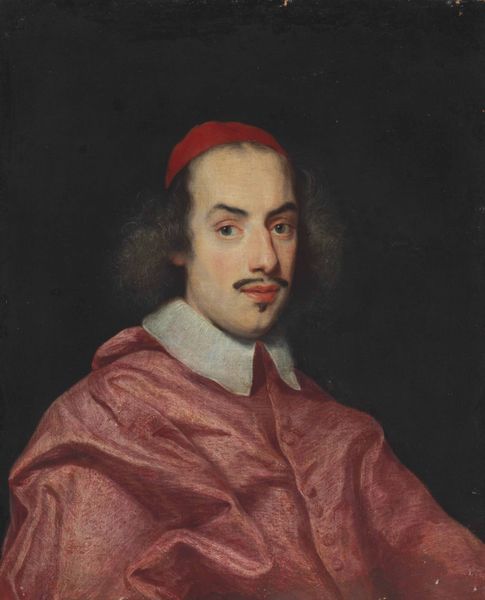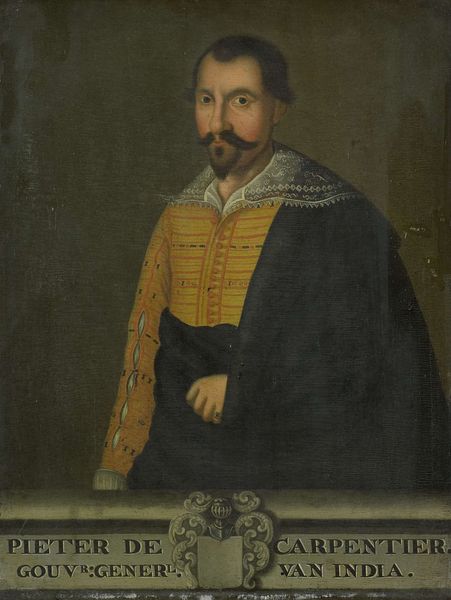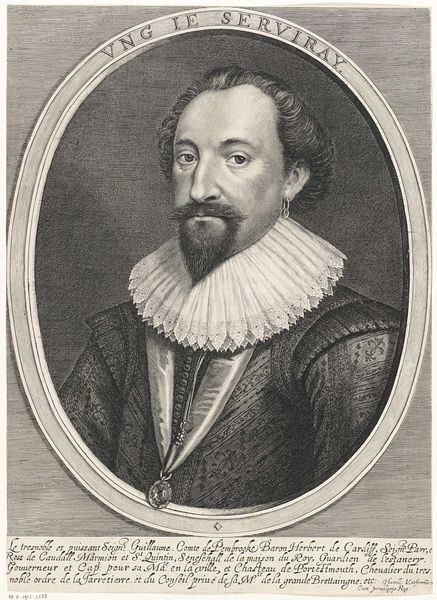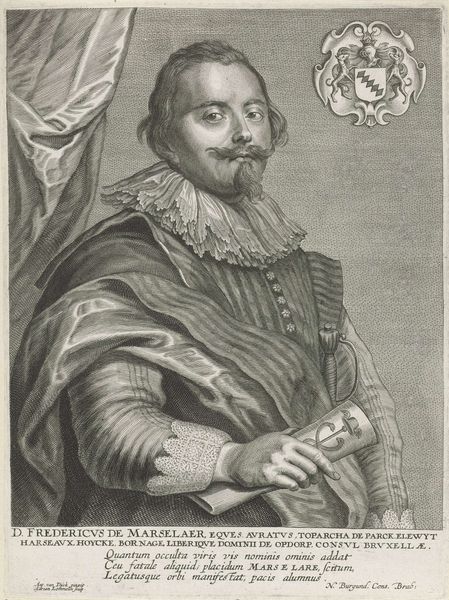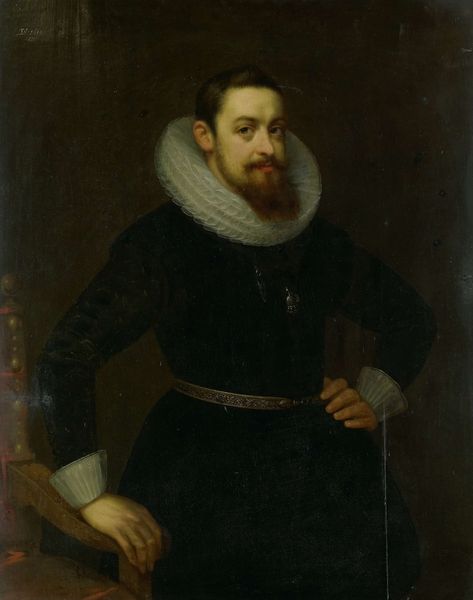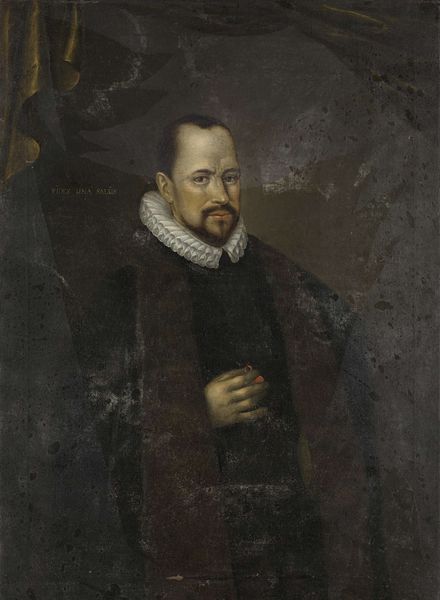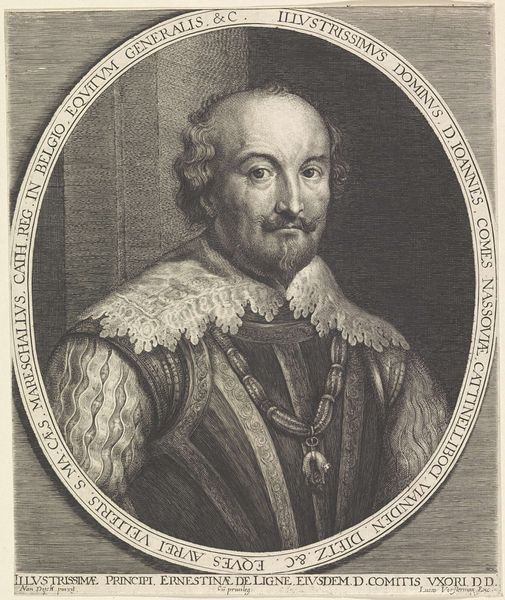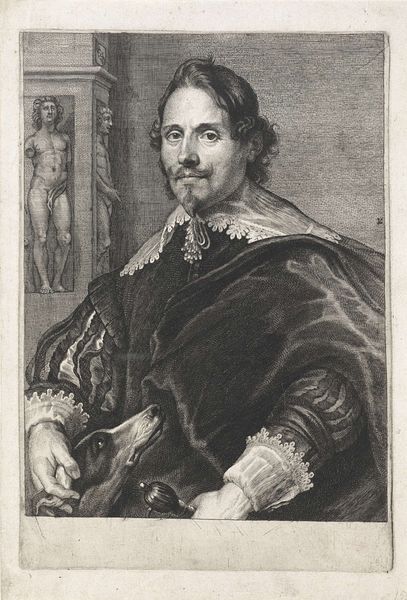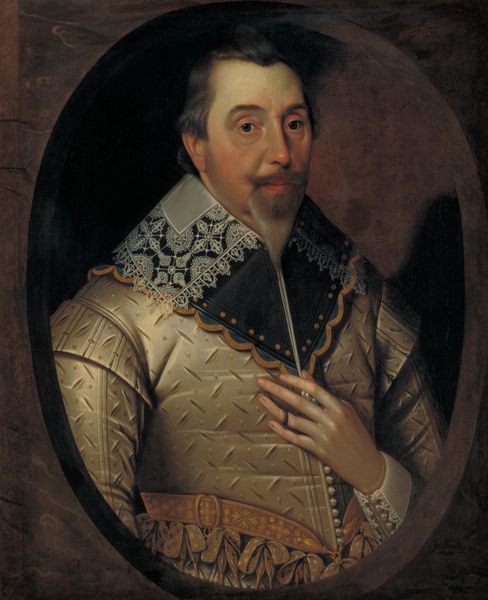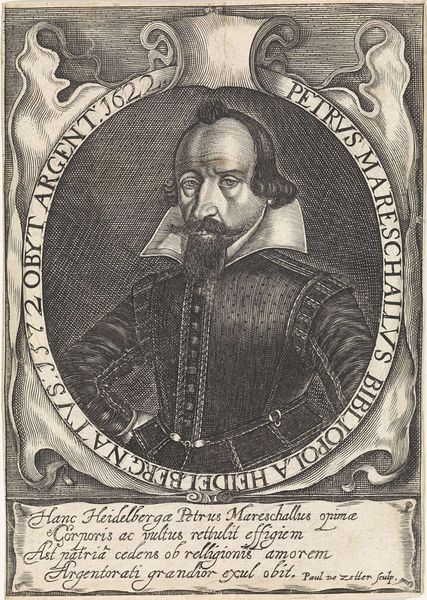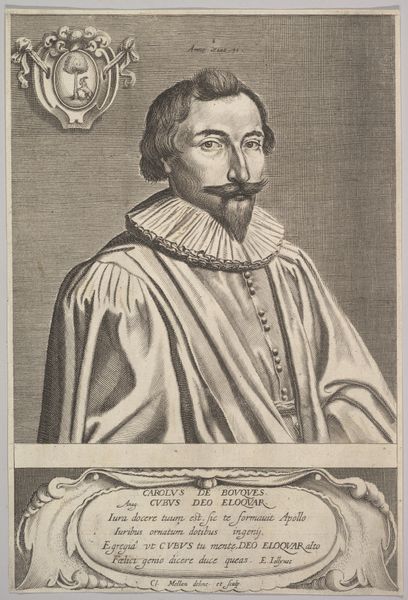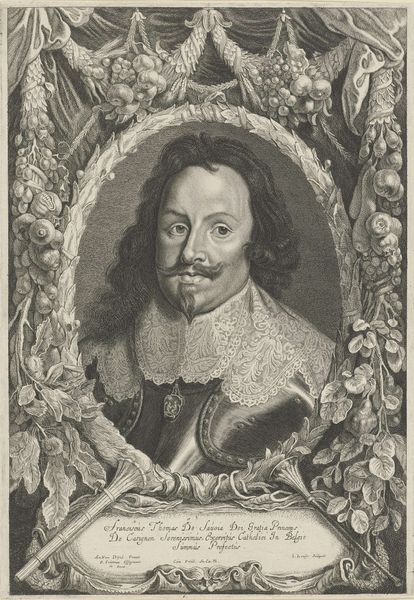
painting, oil-paint
#
portrait
#
baroque
#
painting
#
oil-paint
#
history-painting
#
portrait art
Copyright: Public domain
Curator: This painting attributed to Sassoferrato portrays Cardinal Pietro Ottoboni, who later became Pope Alexander VIII. Editor: The immediate impression is one of controlled power. The strong vertical lines of the chair, contrasted with the fluidity of the drapery, creates an interesting tension, and his piercing gaze suggests formidable intellect. Curator: Portraits like these played a key role in constructing and reinforcing power structures within the Catholic Church. The robes, the setting – everything is carefully chosen to project an image of authority and piety. Think about the strategic display of wealth. Editor: Absolutely. The vibrant crimson of the mozzetta instantly connects him with the symbolism of sacrifice and divine love in the church, doesn’t it? It's the color of cardinals, linking him directly to papal authority. But, at the same time, those billowing, reflective surfaces lend an almost theatrical, Baroque drama to the overall composition. Curator: Baroque drama indeed! The placement of portraits, like this one, in palaces and Vatican halls would be a way of cementing both the Church's place in history and that of individual families, the Ottoboni in this instance. These were politically charged declarations of influence. Editor: It's remarkable how the visual language evolved, isn’t it? Even in his hands; one bears a ring, marking position, while the other clasps what looks to be a biretta, promising devotion. Even something simple such as his hair: how would you explain that white patch within the iconography of the church? Curator: Likely an effort for verisimilitude! Flattery wasn't always as rampant as you might think in commissioned portraiture. There was still, in the earlier eras, a desire to record reality along with idealism, for future historical record! Editor: It all accumulates, layer upon layer of significance, giving viewers at the time—and us now—insight into the personal, cultural, and political identity carefully built by Cardinal Ottoboni, wouldn't you agree? Curator: Absolutely, it encourages us to reconsider the interplay between individual ambition and collective identity during the baroque era. Editor: It enriches our appreciation for how historical figures shaped, and continue to shape, collective consciousness, through symbols.
Comments
No comments
Be the first to comment and join the conversation on the ultimate creative platform.
